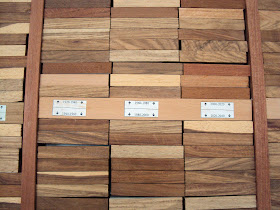 |
Ann-Marie Tully (curator), Facing the Climate, Installation view at
NIROXprojects October 2012.
|
 | |
|
 | |
|
 | |
|
Ann-Marie Tully (curator), Facing the Climate, Installation view at
NIROXprojects October 2012.
|
 |
Ann-Marie Tully (curator), Facing the Climate, Installation
view at NIROXprojects October 2012.
|
 |
Ann-Marie Tully (curator), Facing the Climate, Installation view at
NIROXprojects October 2012.
|
 |
Ann-Marie Tully (curator), Facing the Climate, Installation view at
NIROXprojects October 2012.
|
FACING THE CLIMATE
The Facing the Climate exhibition series
combines climate-themed cartoons by five Swedish artists, with the climate-related
artworks of artists in host countries: in this case five South African
cartoonists join five Swedish cartoonists in taking a sharp look at the climate
issue, with the aim of encouraging discussion about the sustainable society and
heightening awareness of current environmental problems. Facing the Climate
has been staged in a number of international contexts, with exhibitions taking
place during 2012 in Rio, Athens, Tirana, Tel Aviv and Novosibirsk amongst
other cities around the world. The Facing the Climate exhibition in
South Africa is curated by Ann-Marie Tully in association with the Swedish
Embassy of South Africa.
Facing the Climate is part of a concerted drive, conceptualised by the Swedish Institute,
to promote critical sustainable development under the heading ‘Facing the
Future – Sustainability the Swedish Way’. The impetus behind this began in
December 2009 in relation to the Copenhagen Climate Conference, when a group of
25 Nordic newspaper cartoonists provided some amusing and alarming reflections
on climate change. To illustrate Sweden’s active involvement in this area, the
Swedish Institute developed the digital climate exhibition Facing the
Climate in collaboration with the Swedish cartoonists/illustrators Magnus
Bard, Helena Lindholm and Riber Hansson. For this exhibition, they are joined
by Love Antell and Karin Sunvisson in commenting on the global climate dilemma.
The South African cartoonists/illustrators involved in this project are Tony
Grogan, Wilson Mgobhozi, Ree Treweek, Sifiso Yalo and
Zapiro.
 |
Ann-Marie Tully (curator), Facing the Climate, Installation view at
NIROXprojects October 2012.
|
The Facing the Climate exhibition at NIROX projects was accompanied by the workshop:
Towards a Grass Roots Women's Movement around Climate Justice and Sustainable Development: An initiative of GenderCC South Africa in partnership with OXFAM and the Swedish Embassy of South Africa, 2 November 2012:
GenderCCSA and Oxfam hosted a one day dialogue session on the 2nd November with the aim of fostering a platform between government, business, academia and grassroots organizations, particularly rural women and small-scale farmers to engage with climate change concerns that are affecting women’s livelihoods. The workshop addressed the following issues: climate change adaptation and the role of grassroots women; the role of grassroots women in climate change mitigation; and the roll out of renewable energy and energy efficiency initiatives; how climate change will affect small-scale farmers and sustainable agriculture for adaptation; climate finance and how it can benefit grassroots women to mitigate and adapt to impacts of climate change.
If you are interested in finding out more about this workshop please contact Mrs. Dorah Marema (GenderCC Southern Africa – Women for Climate Justice):
Tel: +27 11 050 1343.
Facing the Climate opened its run at Michaelis Galleries on 28 September 2012 as part of the GIPCA Hot Water Symposium, before traveling to NIROXprojects in Johannesburg for exhibition from 28 October–19 November; culminating in a final exhibition at the Oliewenhuis Museum in Bloemfontein from 11 April–9 June 2013.
For more information:
www.niroxarts.com













